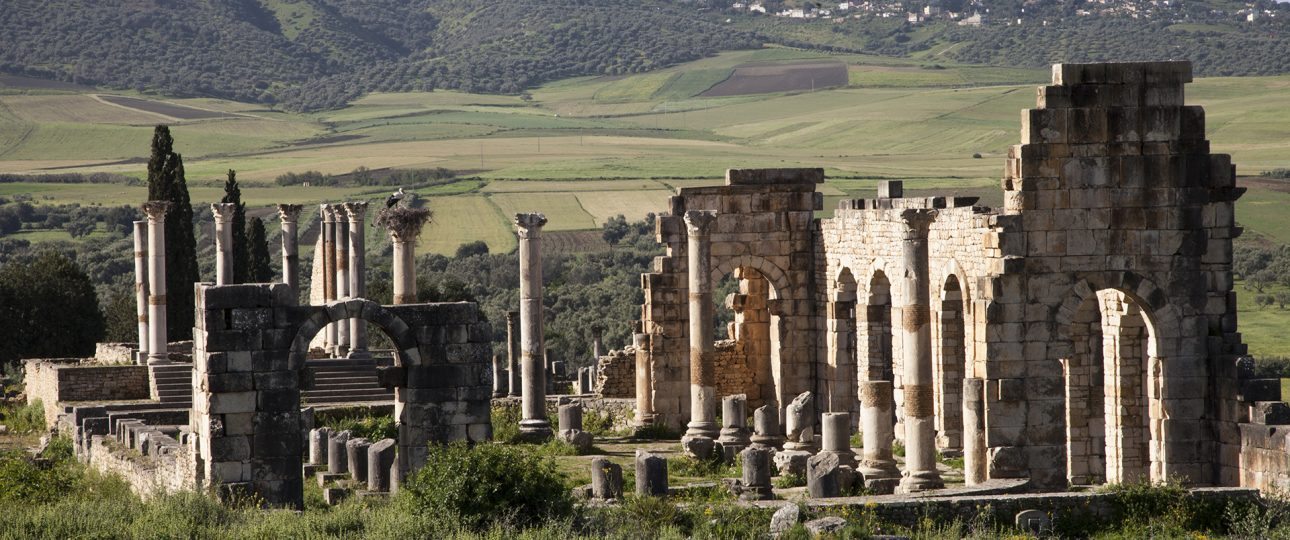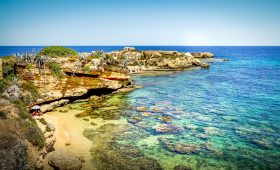Exploring Volubilis: An Ancient Roman City in Morocco
History of Volubilis
Volubilis, an ancient Roman city, is perched on a ridge above the fertile valley of Khoumane near the modern city of Meknes, Morocco. The area has been inhabited since the Late Atlantic Neolithic period, around 5,000 years ago. By the third century BC, the Carthaginians had established a presence here, evidenced by a temple dedicated to the Punic god Baal and Phoenician-inscribed pottery.
Volubilis became part of the kingdom of Mauretania, a Roman client state after Carthage’s fall in 146 BC. Under King Juba II, a Romanized Berber ruler, the city flourished as a second capital. Following the annexation of Mauretania by Emperor Claudius in 44 AD, Volubilis expanded significantly, thriving on its production of grain, olive oil, and wild animals for Roman spectacles. At its peak in the late 2nd century, the city housed around 20,000 inhabitants.
Architectural Highlights
Volubilis is renowned for its well-preserved Roman ruins, offering a vivid glimpse into ancient life. Key features include:
- Intricate Mosaics: The city boasts stunning mosaics depicting mythological scenes and daily life, showcasing the artistic prowess of its time.
- Triumphal Arch: This grand arch, dedicated to Emperor Caracalla, stands as a testament to Roman architectural ingenuity.
- Capitol and Basilica: These structures highlight the city’s role as a political and religious center.
Cultural Significance
Volubilis reflects a blend of Roman, Berber, and later Arab influences. This cultural tapestry is evident in its architecture and art. The city’s status as a UNESCO World Heritage Site underscores its historical importance, offering insights into the Roman presence in North Africa and the cultural exchanges of the era.
Best Time to Visit
Timing your visit to Volubilis can enhance your experience. Consider these seasons:
- Spring (March to May): Enjoy mild weather and blooming landscapes, ideal for exploring the ruins.
- Autumn (September to November): Cooler temperatures and vibrant foliage make this another favorable time.
Avoid the peak summer months when temperatures can soar above 40°C (104°F).
Getting There
Reaching Volubilis is straightforward with these options:
- By Car: Rent a car from Meknes or Fez. The drive takes about an hour from Meknes and two hours from Fez.
- By Bus: Public buses run from Meknes to Moulay Idriss Zerhoun, the nearest village. From there, take a taxi or enjoy a scenic walk to the site.
Exploring the Site
Once at Volubilis, explore the ruins on foot. The compact layout makes walking the best way to absorb the atmosphere. For deeper insights, consider hiring a local guide who can share the site’s rich history and significance.
Practical Considerations
While Volubilis offers a fascinating journey through history, be prepared for limited amenities on-site. Bring water, wear comfortable shoes, and protect yourself from the sun. The lack of shade can be challenging, especially during warmer months.




